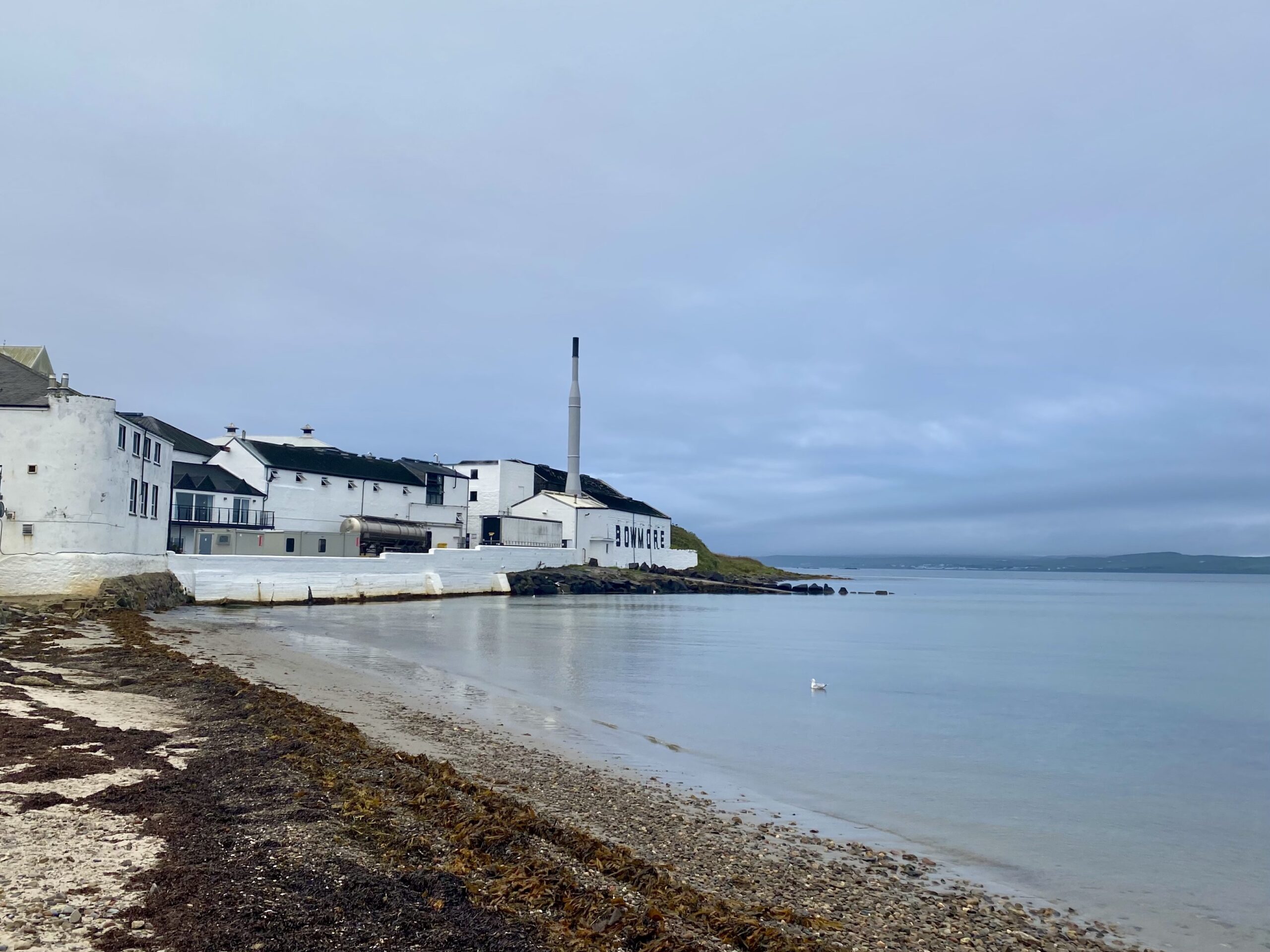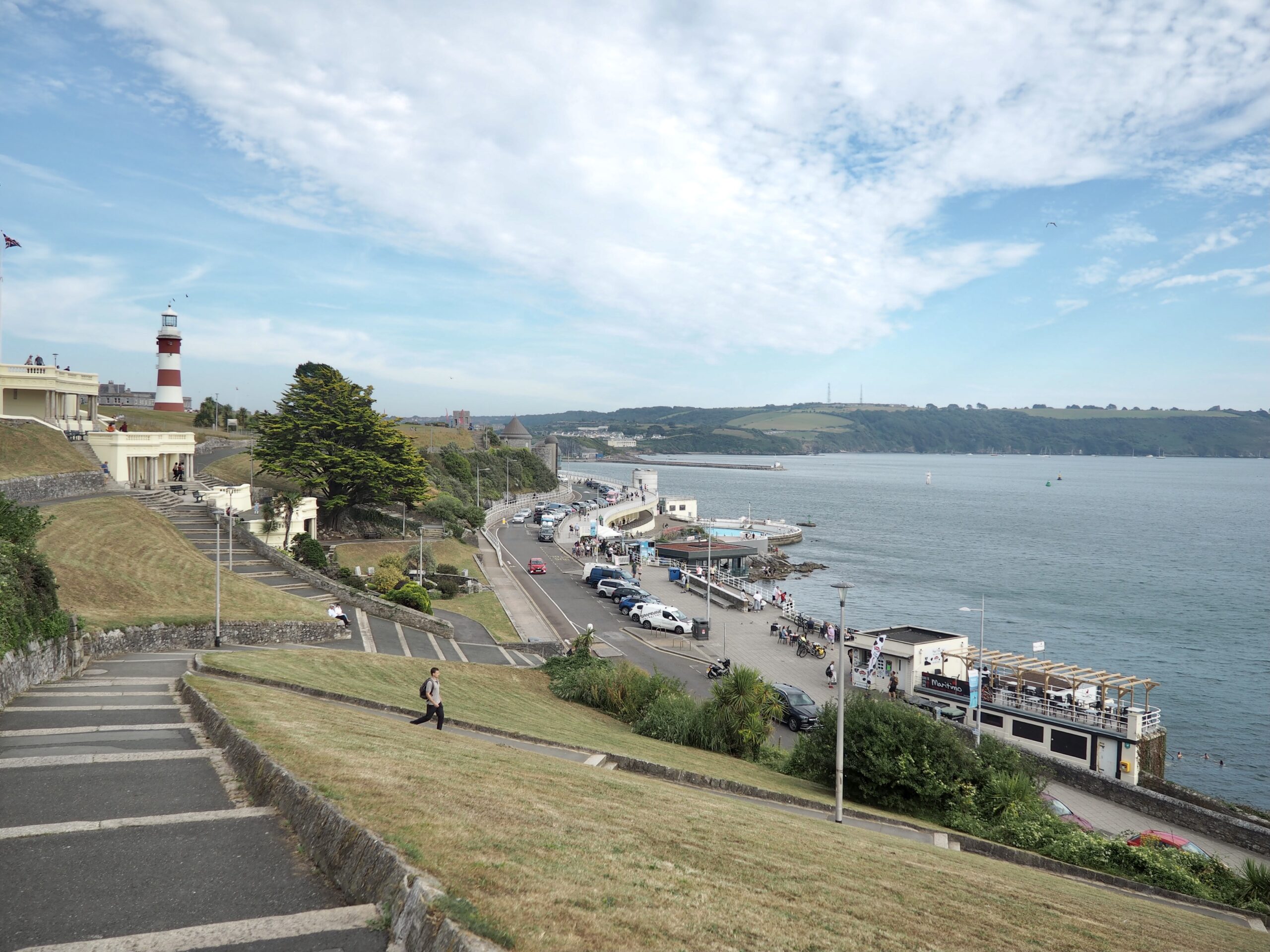
3 Day Itinerary for Plymouth, Devon
The journey from Edinburgh to Devon is not a short one, with two train journeys and a mad changing of train stations via the London underground. So when I travelled down there for a UK-based holiday during Covid, I wasn’t going for a short break. I spent a week in Devon, and after the first half in Exeter, I moved to Plymouth for the second half. Both cities were convenient bases for other day trips around the region on trains and buses. As well as having plenty of things to see themselves! I even managed to get a studio apartment for my 4-night itinerary in Plymouth, which gave me the option to cook meals (never managed to get on board with eating dinner out solo yet).

Day One
Devil’s Point & Royal William Yard
The first day of my Plymouth itinerary got off to a slow start when I woke up to a torrential thunderstorm. Like, so bad I had friends at home checking in and sending me news articles about schools being closed. There were thunder cracks every few minutes, immediately followed by lightning right outside the window. I normally enjoy thunderstorms but that was a little too close for comfort! Anyway, I was going nowhere for a few hours. I think a lazy TV morning is allowed on holiday though! It eventually let up by the afternoon though and I was able to explore Plymouth for a few hours.
I started by heading to the west side of the city, winding through the city streets. There were some more industrial areas since the city was built around shopping yards, and I passed the ferry terminal. But these were interspersed with prettier Victorian townhouse-style buildings. I did enjoy the colourful pastel-toned ones, which made it feel like a seaside town again! My first destination was Devil’s Point, jutting out from the mainland and looking out at Drake Island. There’s a tidal pool here and a small park by the sea which I wandered through. The sky was still grey and stormy from that morning, making it quite atmospheric!
Following the coast around this peninsula, I then reached Royal William’s Yard. This is an old shipping yard full of historic warehouse buildings, which have now been converted into shops and restaurants. It seemed pretty quiet when I was there, but it was a weekday afternoon, I guess. I liked the idea of renovating these old buildings though, to bring some life back into them!

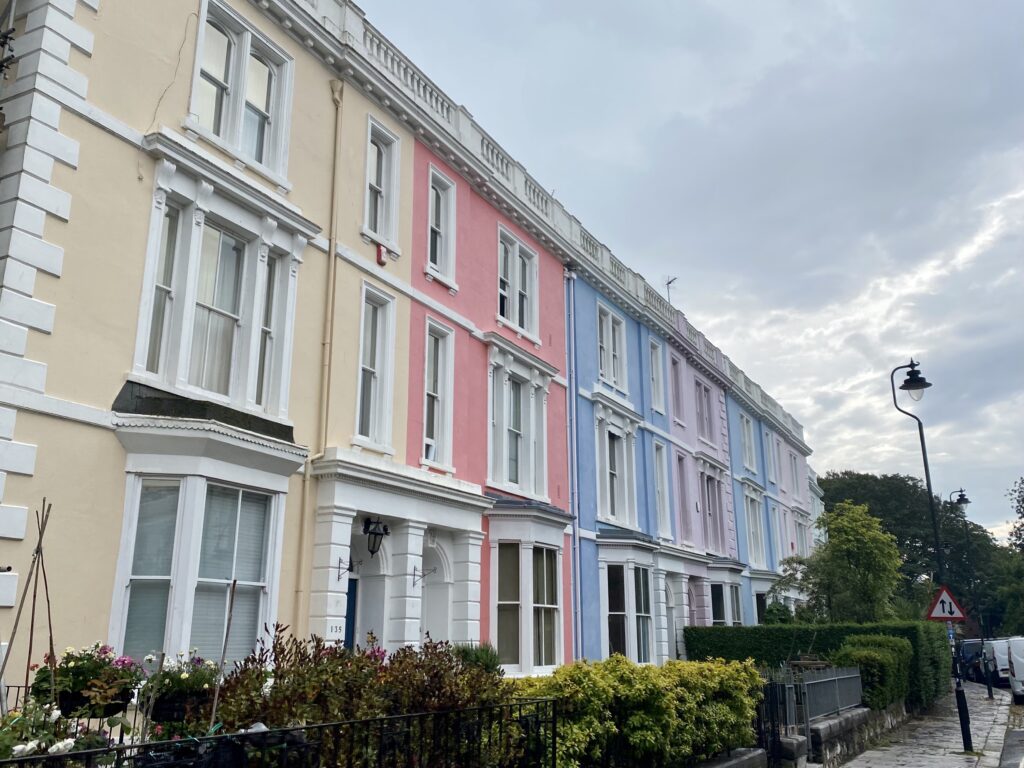
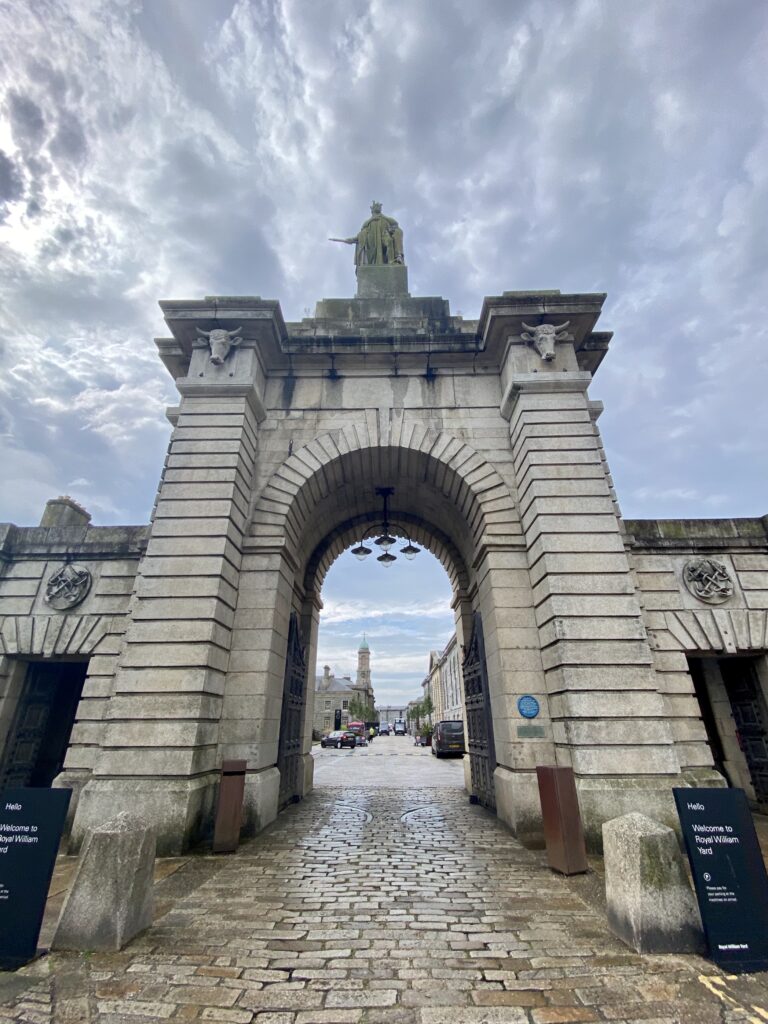
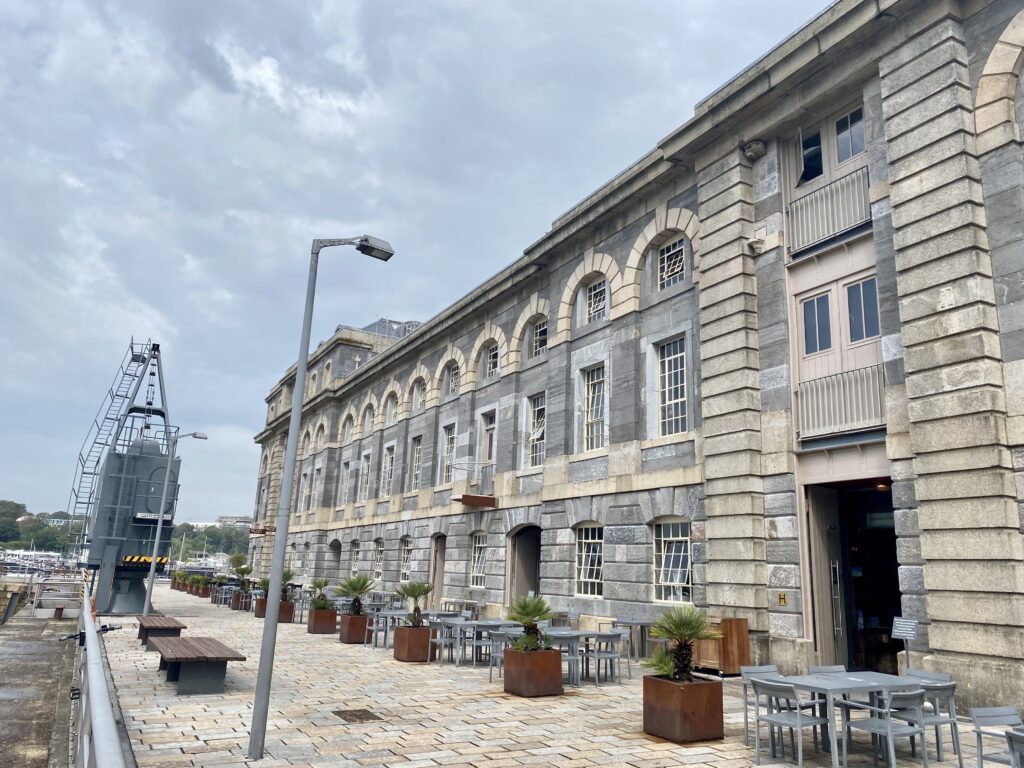
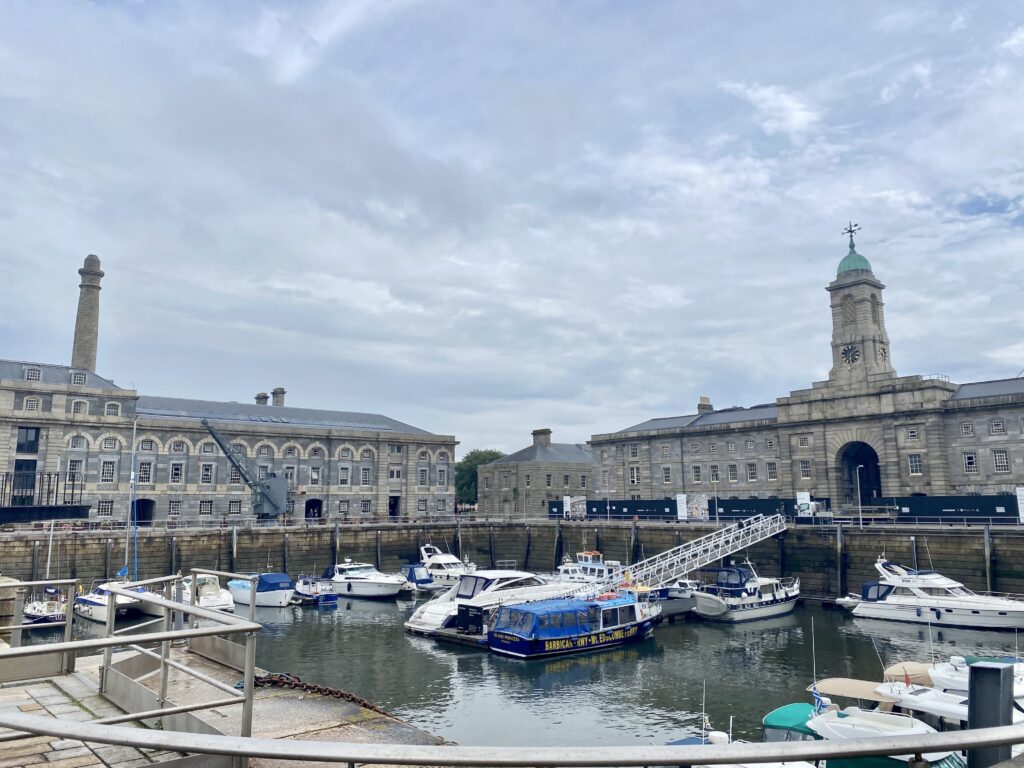
Waterfront Walk to Hoe Park
Plymouth is built right along England’s southern coast atop the cliffs, offering stunning sea views. So to the make the most of it, I walked from Royal William’s Yard east, staying as close to the coast as I could. I had to retrace my steps from Devil’s Point, then followed Grand Parade and Hoe Road. The curve of the coastline also means you get great views of Plymouth along the way. There are various plaques and displays about the city’s shipping history as well. Houses, shops and restaurants dot the cliffside, with the drop to the rocks below getting more dramatic as I continued.
About halfway along, I came to Hoe Park, with Smeaton’s Tower painted in red and white stripes in the middle. It’s a stunning spot to sit and enjoy the ocean views, watching the ferries and ships continuously sailing in and out of the city’s multiple harbours. From the park, I could also see down to the Tinside Lido, a popular outdoor swimming pool jutting out into the sea. I also found a clifftop cafe nearby where I sat outside with a coffee and lunch.
Continuing around the coast on Madeira Road, the route follows the clifftops around the Royal Citadel. This monumental fortress is a testament to Plymouth’s defensive location, watching for intruders along England’s southern shores. You can go inside for a guided tour but military history has never been my top interest, so I gave it a miss this time.
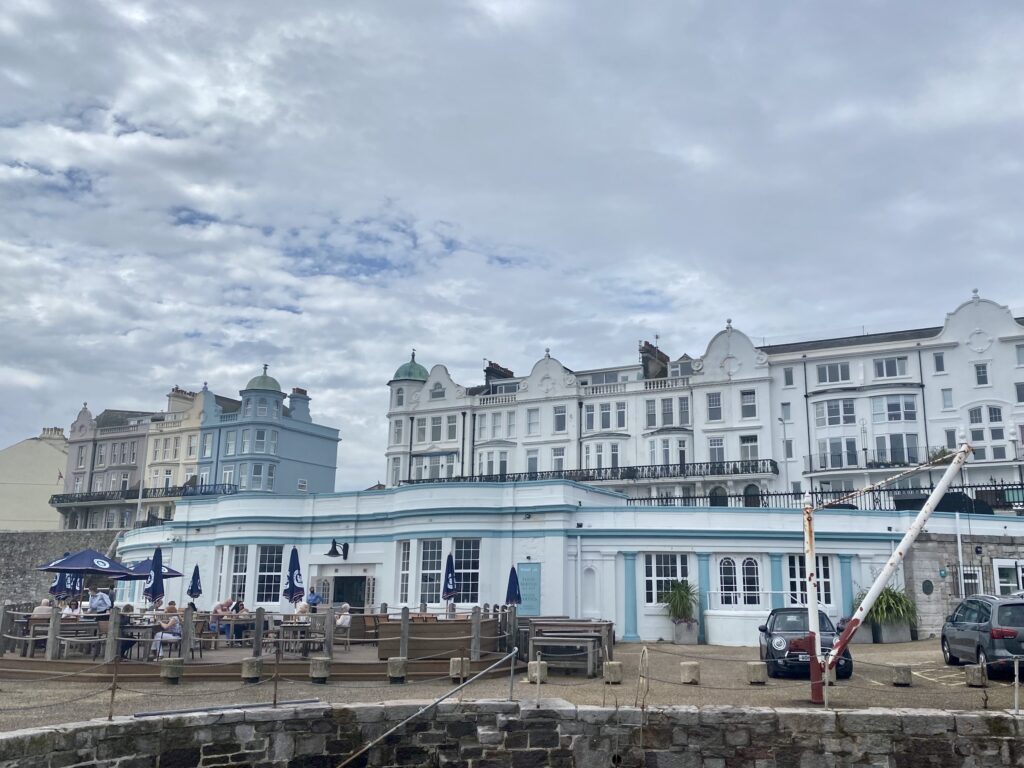


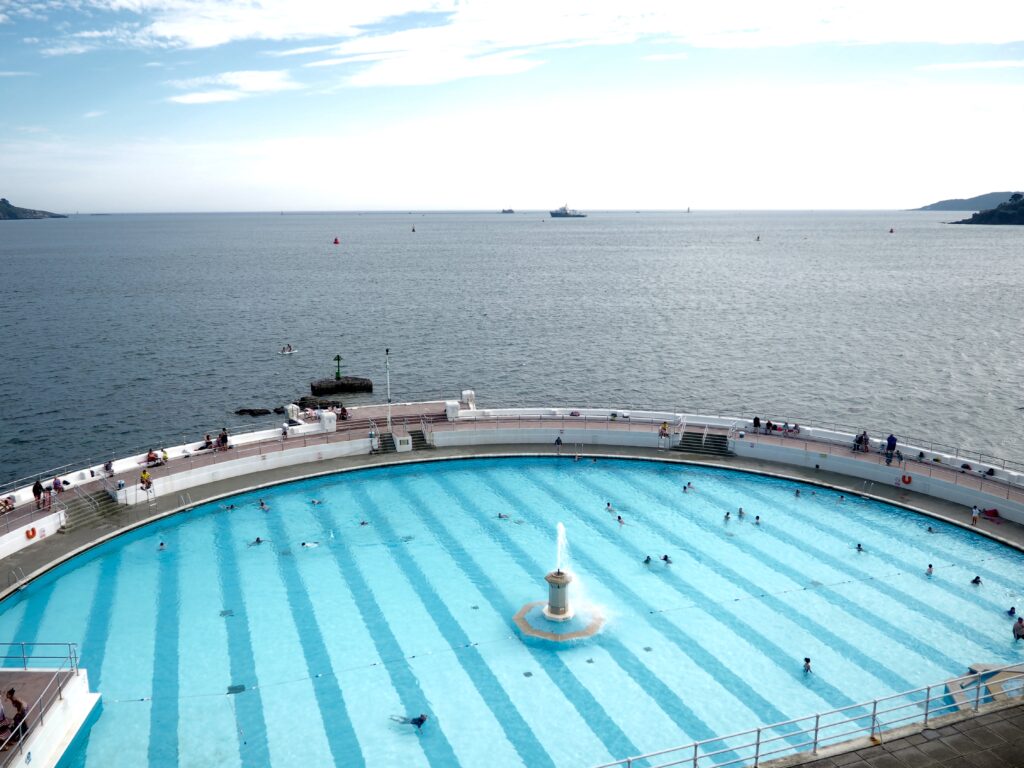
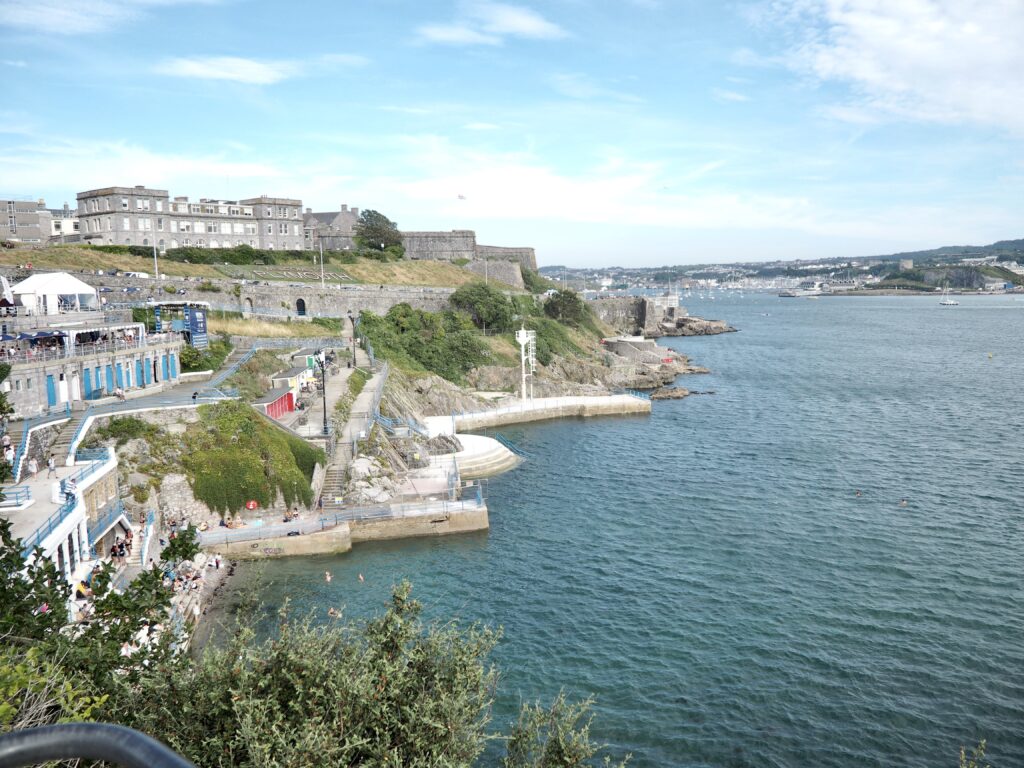
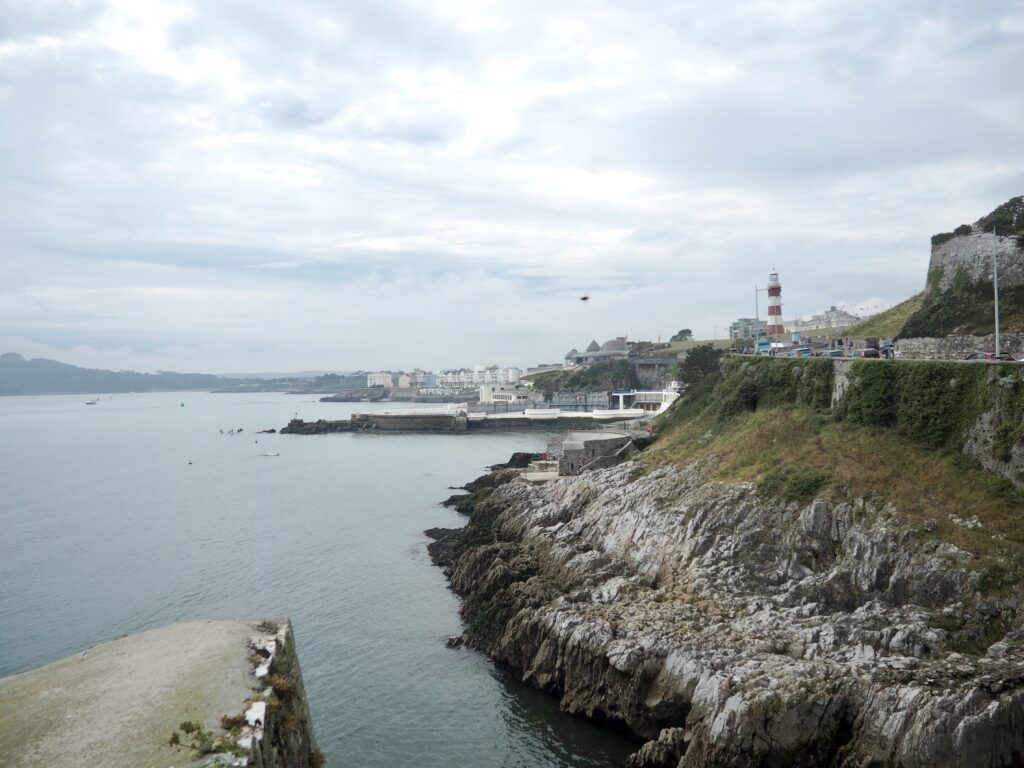
The Barbican & Sutton Harbour
The eastern end point of my walk was the Mayflower Steps, which must be one of the top things on a Plymouth sightseeing itinerary. The city gets to boast as the launching point of the Mayflower, the ship that took the first Pilgrims to North America in 1620. The Steps are a historic landmark to the vessel, and there’s a small museum nearby dedicated to Plymouth’s shipping history (again, maritime history is not my cup of tea either). Both sit right next to Sutton Harbour, which has the National Marine Aquarium on the far side.
Following Pilgrim Way to cross the bridge that spans its entrance, I walked a loop back around the harbour again. Sutton Harbour is less industrial and doesn’t have the huge ferries I’d seen earlier in the day. Instead, it’s mainly used by smaller sailing yachts, a little prettier in my opinion. There are several pubs and restaurants around the harbour too, a trend that continues in the Barbican area. This street starts behind the Mayflower Museum with several waterfront pubs and restaurants. Strung with lights overhead, it leads inland and has a collection of independent shops and more eateries to peruse. It felt lively even on a grey day, so I can only imagine how popular it can get when the sun’s out. It also conveniently led me back to my accommodation, to rest up after a lot of walking!

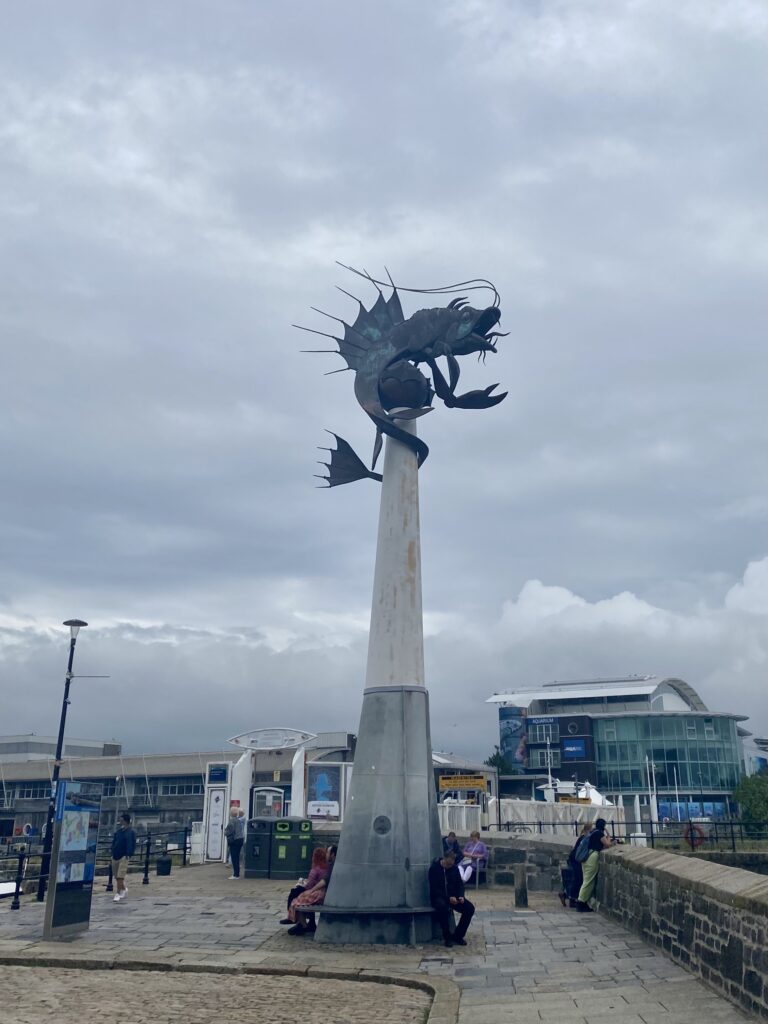
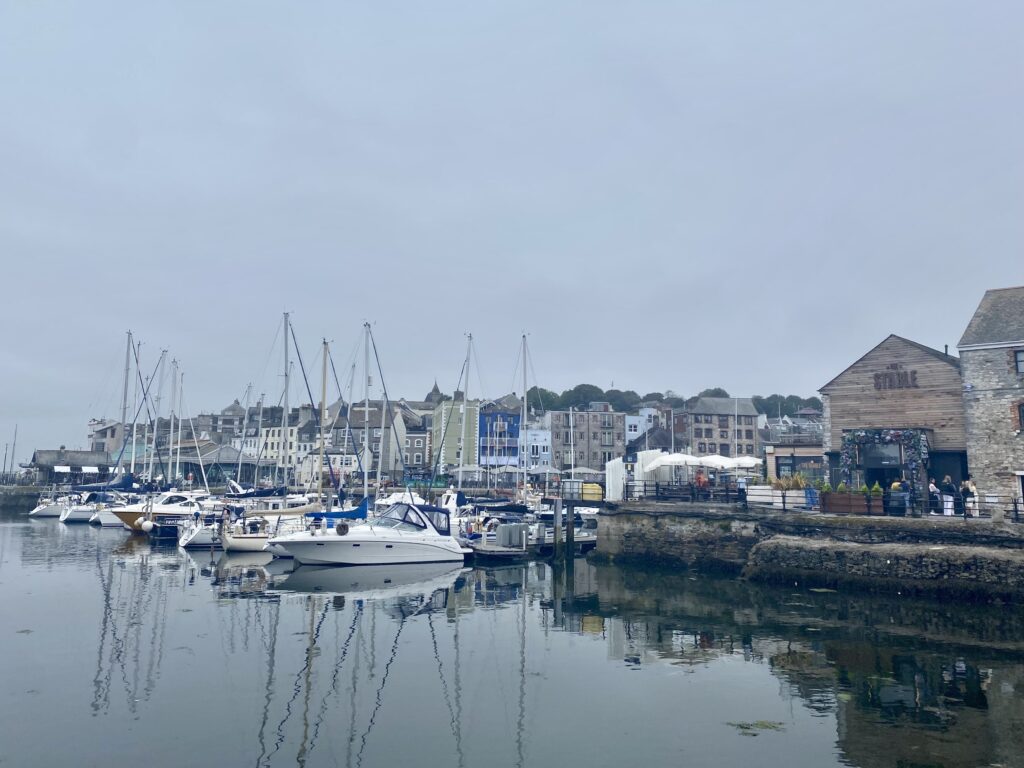
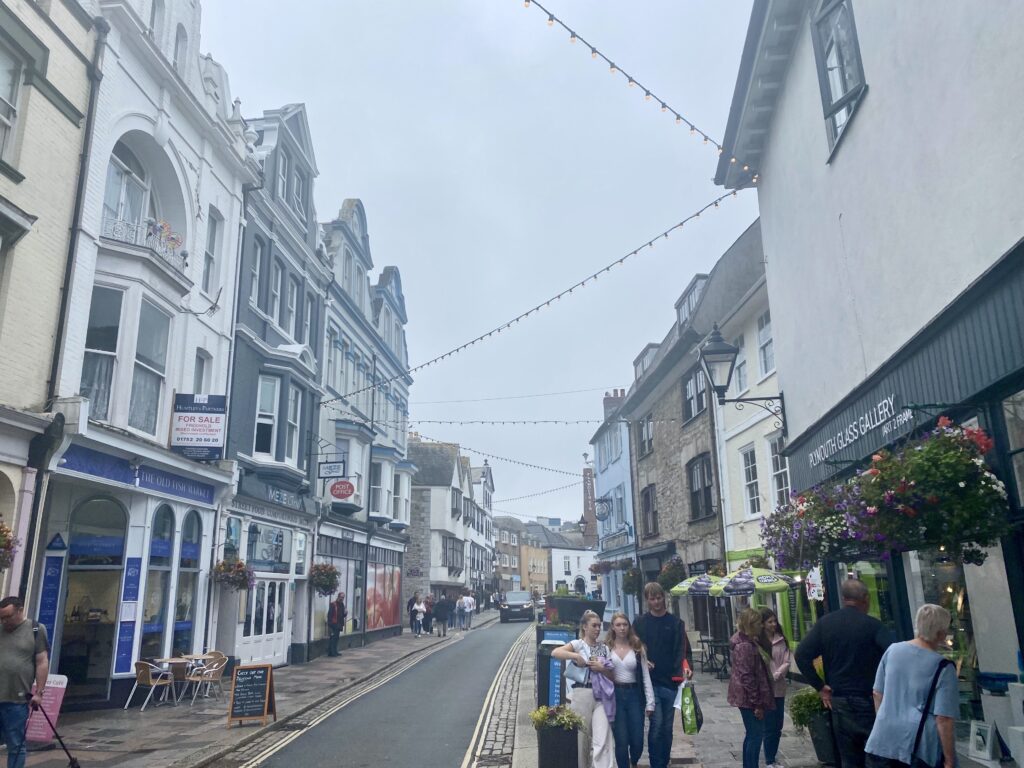
Day Two
The Eden Project
So for my second day of my Plymouth-based itinerary, I was technically venturing out of Devon and into the next county over, Cornwall. My destination being the Eden Project. It’s one of those places I’ve known about forever but never had the chance to go to. And it was even featured in my Environmental Studies Open University course I’m currently taking, so surely this counts as an educational trip, right?
From Plymouth, it was a train and then a bus ride to reach the Project. I went on a weekday and bought my ticket online in advance, but still went early to try to beat the crowds. Adding on the journey time, it was an early start to the day! I had also at one point considered trying to visit Looe on my way back to Plymouth the same day, as it was kind of en route. But between the early morning and coordinating bus timetables, it would have been too exhausting all in one day I concluded! And I didn’t want to rush through the Eden Project and not enjoy it fully.
For anyone unfamiliar with the Eden Project, it boasts the world’s largest greenhouses, huge biomes built into an old quarry pit. The glass domes are then surrounded by gardens, so there are thousands of plants from all over the world. It’s also an important educational site for the environment, looking at the importance of plants and how we can live more sustainably with them. The biomes also collect rainwater and efficiently capture the sun’s heat through the building materials used, to reduce their energy consumption. All of which I found fascinating and was super impressed with from a sustainability standpoint!
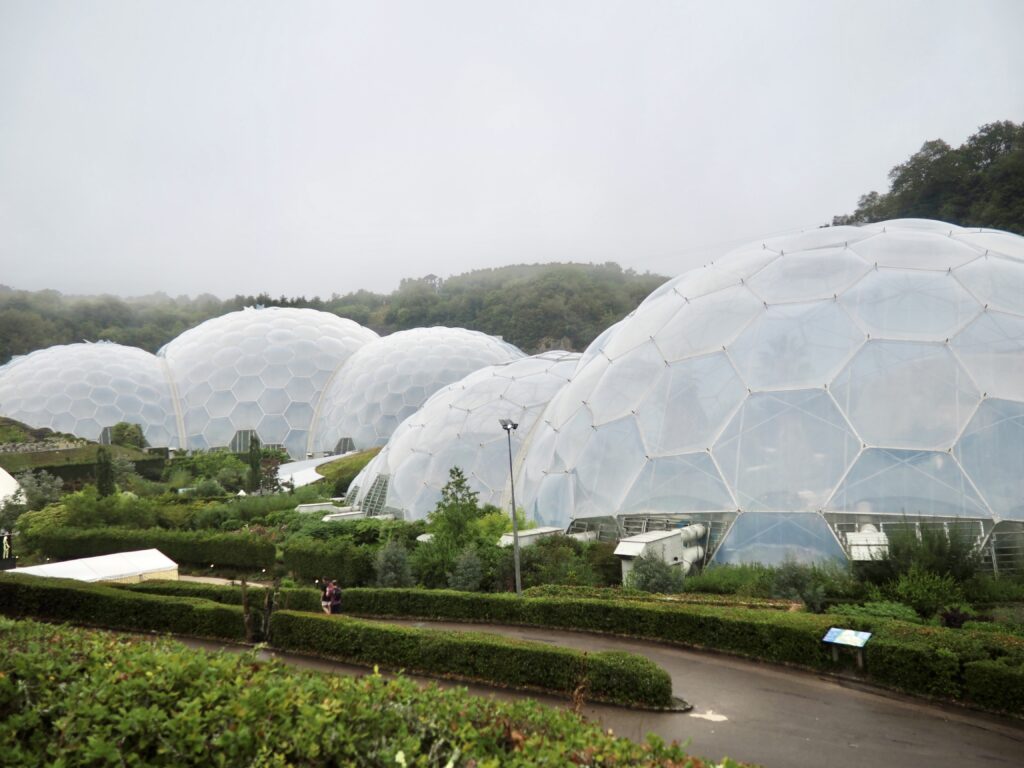


The Biomes
When you arrive at the site, you first have to descend down the sloping paths into the quarry pit. Only after passing through the ticket office (which also has a cafe and shop) do you get your first sighting of the glass biomes. I’ve seen plenty of photos before, but they really are massive! There are four of them linked together in total, split into two main climates, temperate and tropical.
I started in the temperature side, which is further divided into different regions. There are temperature zones all over the world, so the biome journeys from Spain to South Africa to the Australian desert. I enjoyed the nods to the cultures of each region as well, like the Greek nymphs in the vineyard and the Aboriginal artwork. They even have a terrace-stye cafe that feels straight out the Mediterranean. There are also signs telling you about the importance and uses of the various plants to different cultures. It was pretty to walk through and really interesting as well!
The second, larger half was the tropical biome. This had towering palm trees, hanging rope bridges, water features and even birds strutting around the ground. I honestly felt like I was walking through the jungle at times, especially with the humidity! There were gorgeous colourful flowers, twisting vines and leafy ferns. The way that plants evolved and how some function is truly a newfound source of awe to me! And again, there were cultures and regions from across the globe, from the ocean voyagers of the Pacific islands to the jungle dwellers of the Amazon.
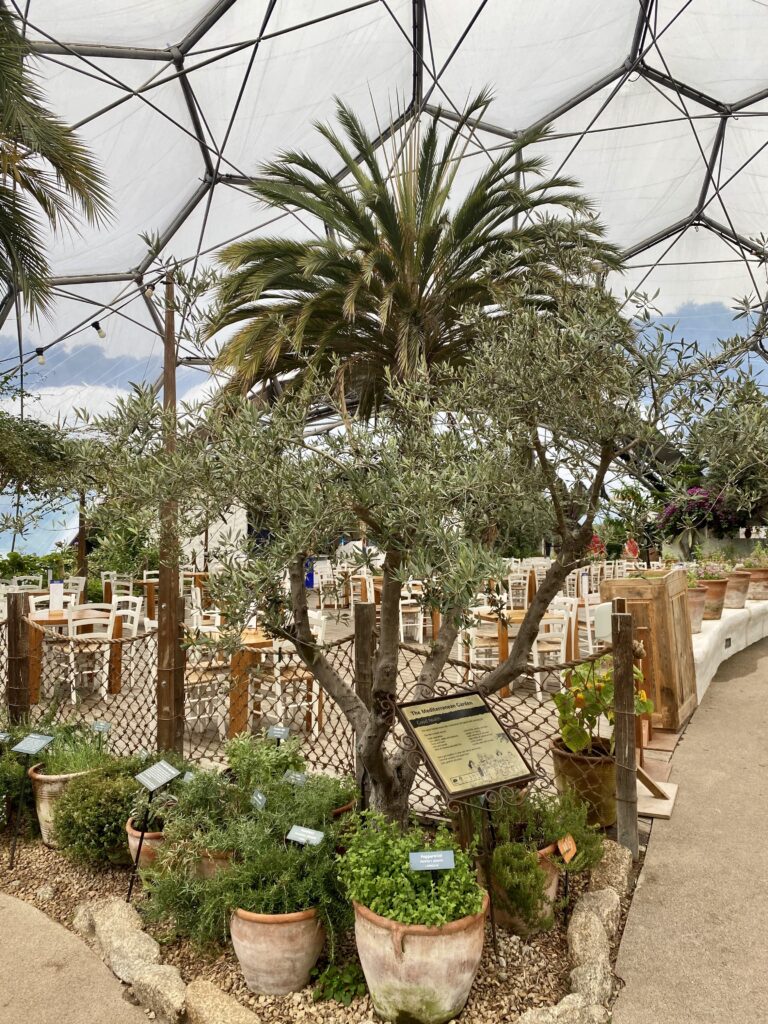

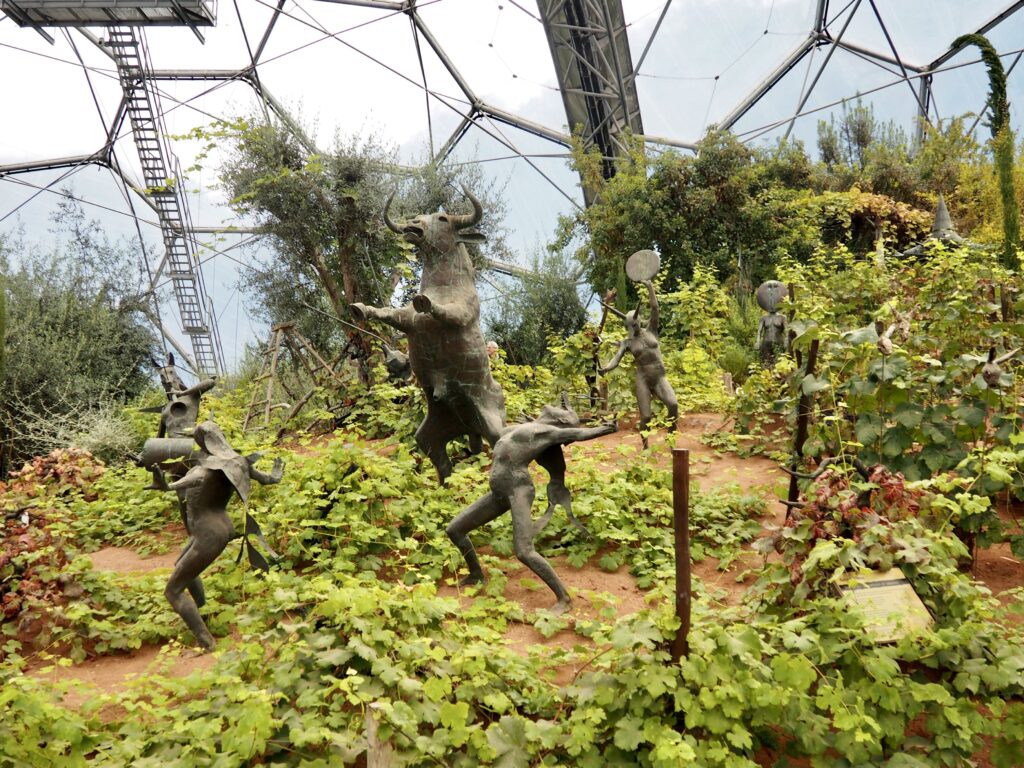
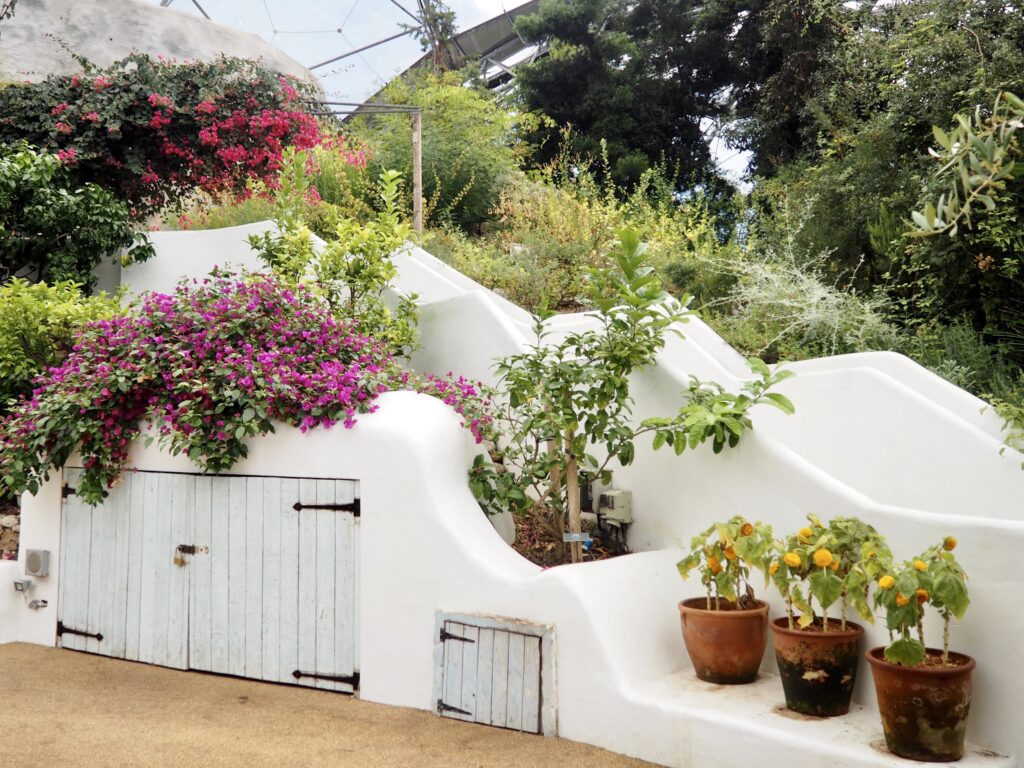

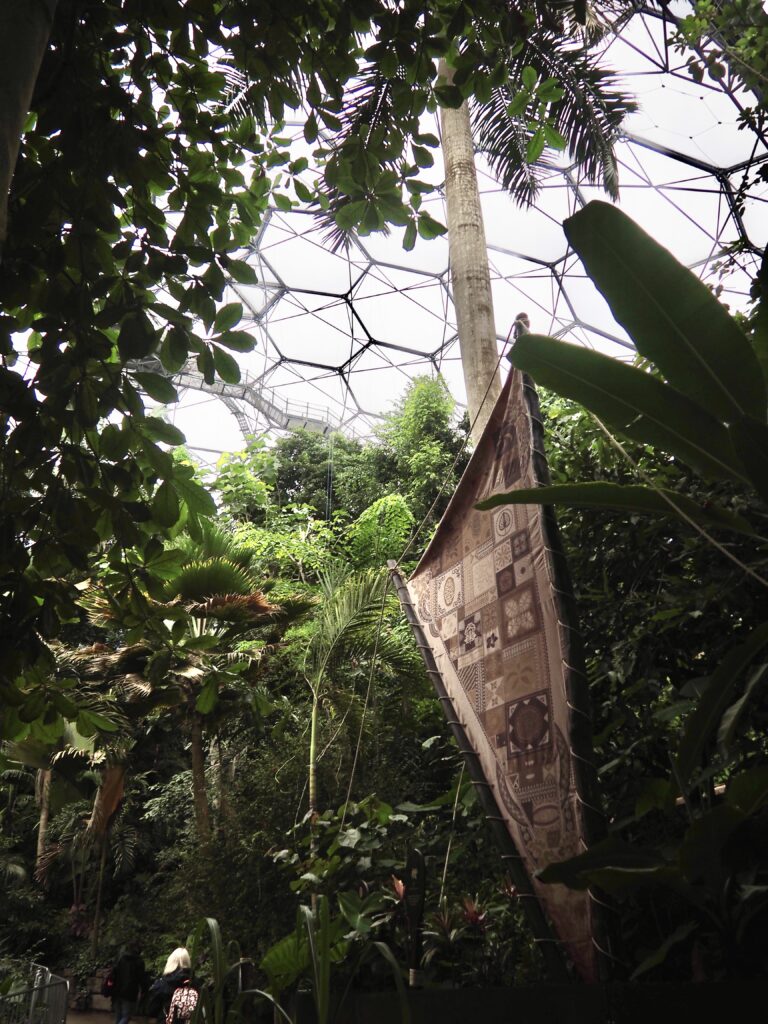




The Gardens
While the biomes are the initial star attraction, there’s plenty more to see besides them. The rest of the quarry pit is filled with open-air gardens, with plants more suited to the Cornwall climate. Naturally, these include native, British plants, but also feature Asian and North American regions too. Many were arranged into terraces stacked up the quarry sides too. I loved the wildflower meadow, brimming with honeybees and insects!
I liked all the art installations dotted amongst the plants too. Some were more abstract designs with twisted metals and mirrors, while others were literal representations of nature. Including a giant honeybee and Mother Earth herself! There are a few other buildings throughout the project too, which house other educational exhibits. Once I had sufficiently explored the whole quarry pit, I exited via the bridge. At the perfect moment too, as the sky suddenly brightened up, offering me one last look at the incredible glass biomes! I had been keen to fit the Eden Project into my Plymouth itinerary, and it certainly didn’t disappoint.
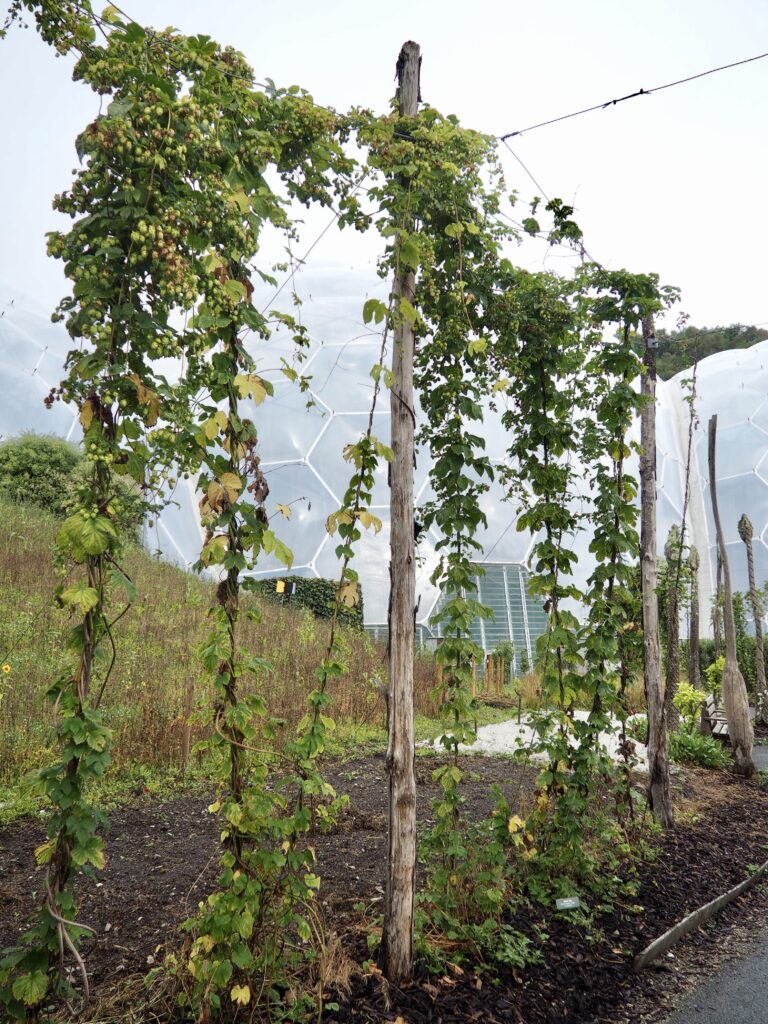

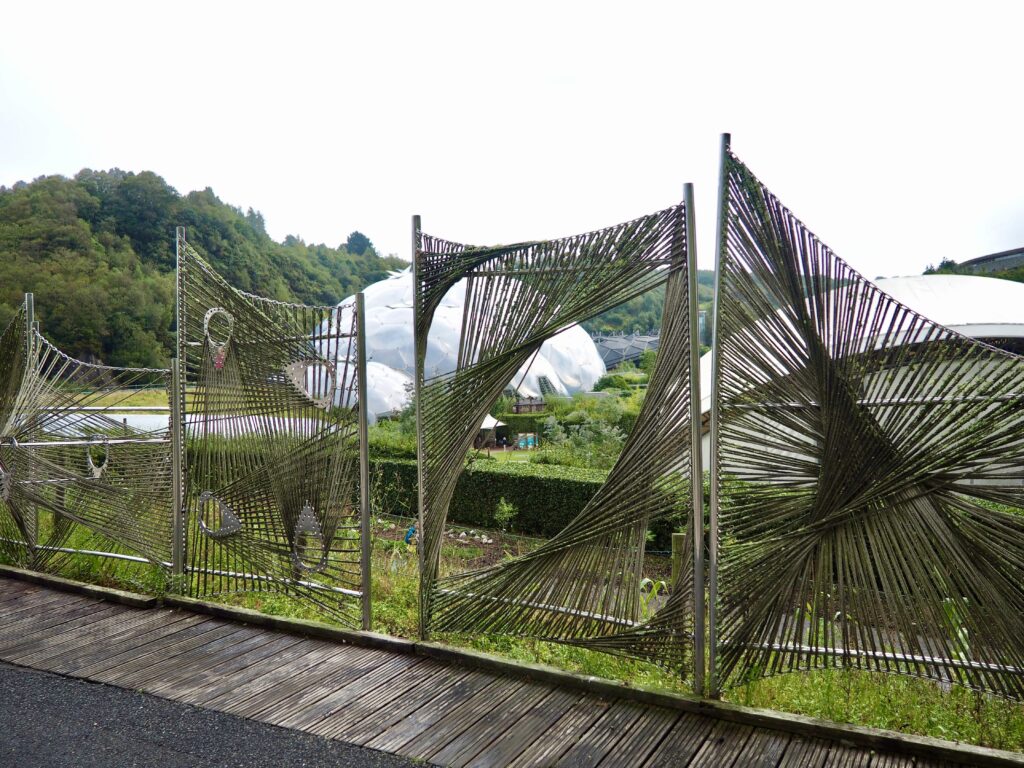
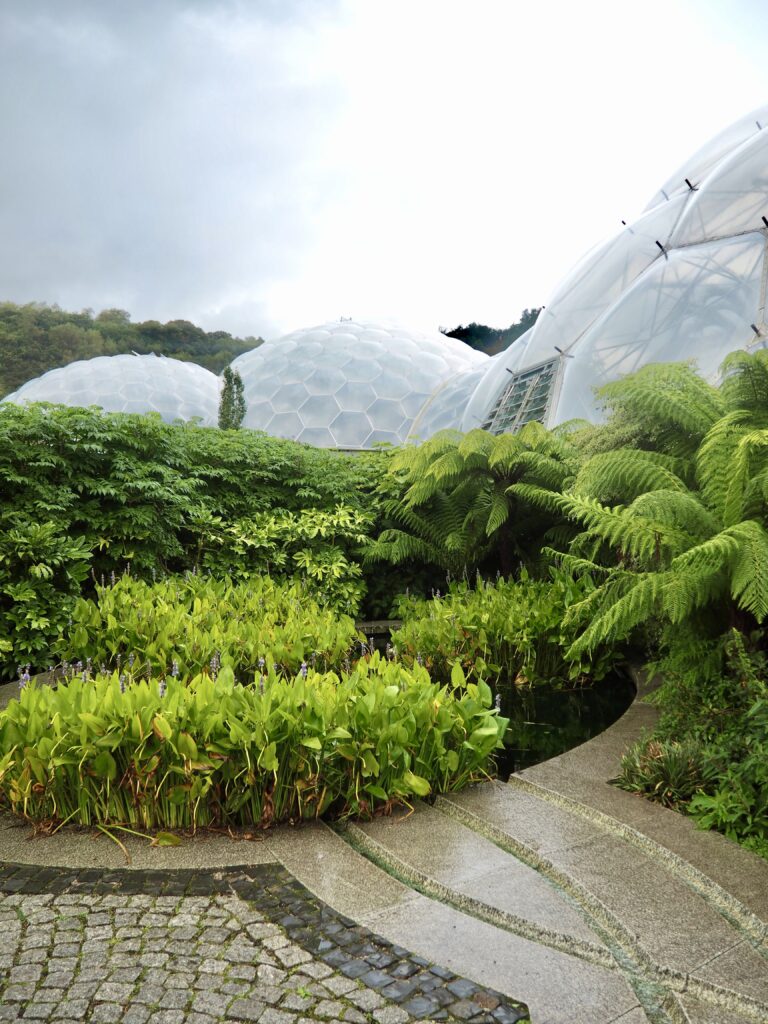
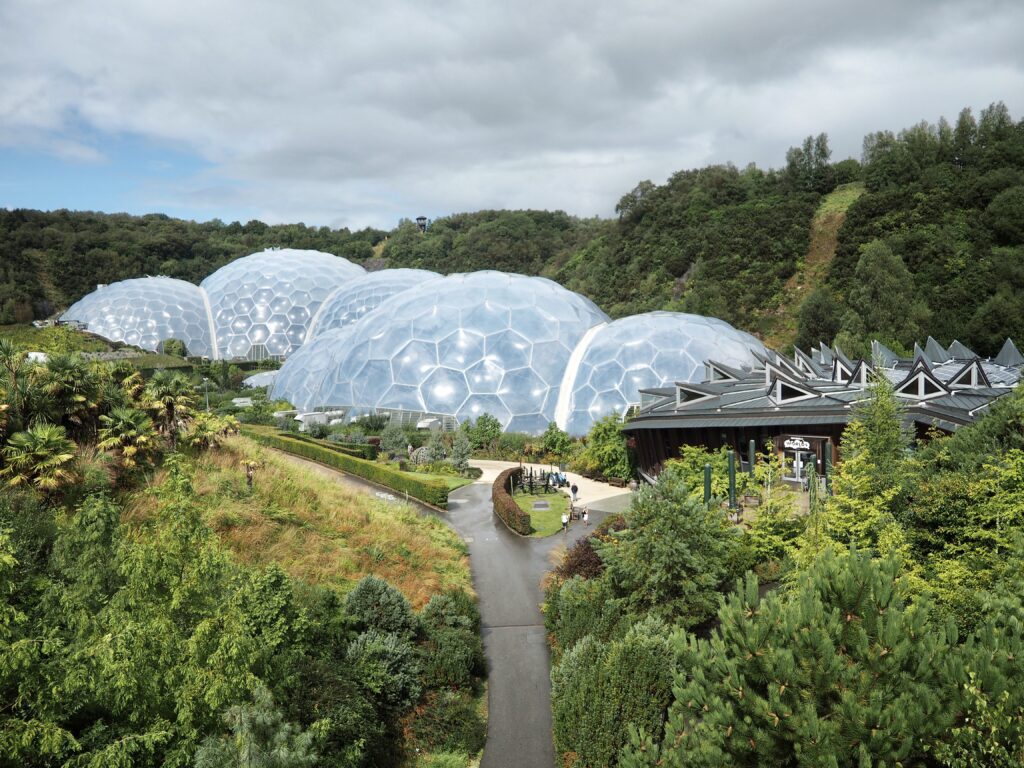
Day Three
Dartmouth
The final full day of my Plymouth-based itinerary was given over to another full-day trip out of the city. This time, I was off the ‘English Riviera’, a collection of coastal towns between Plymouth and Exeter. I could have easily reached them while I was in Exeter too. This was just how my whole week’s itinerary panned out. I started with a train and then a bus journey to Dartmouth, a seaside town on the Dart estuary. As with all these Devon coastal towns, it’s filled with pretty architecture, with picturesque colourful houses stacked up the hillside. There are dozens of boats moored along the harbour and even more sailing in and out the estuary. The neighbouring town of Kingswear sits on the opposite shore as well.
I wandered through the town, browsing the windows of its shops and galleries along the way. My route took me south along the waterside towards Dartmouth Castle. This sits at the very end of the promontory, staring out to sea to protect the estuary. I think there was a wedding happening that day, based on the number of people in formalwear that I passed! Entry to the castle is ticketed, but I actually found you could see and explore a good portion of its battlements for free. After soaking in the sea air blowing in, I retraced my steps back to Dartmouth town, stopping for lunch when I got there. Then, it was time to hop aboard a ferry and cross the estuary to Kingswear, a journey of only 10 minutes or so.
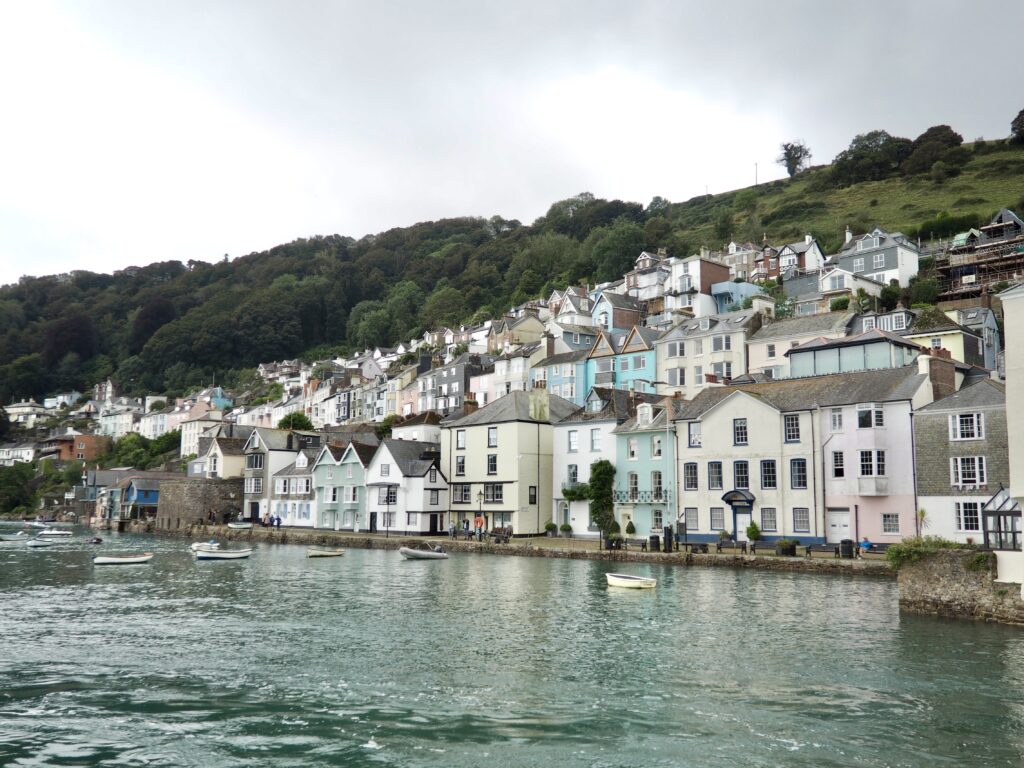

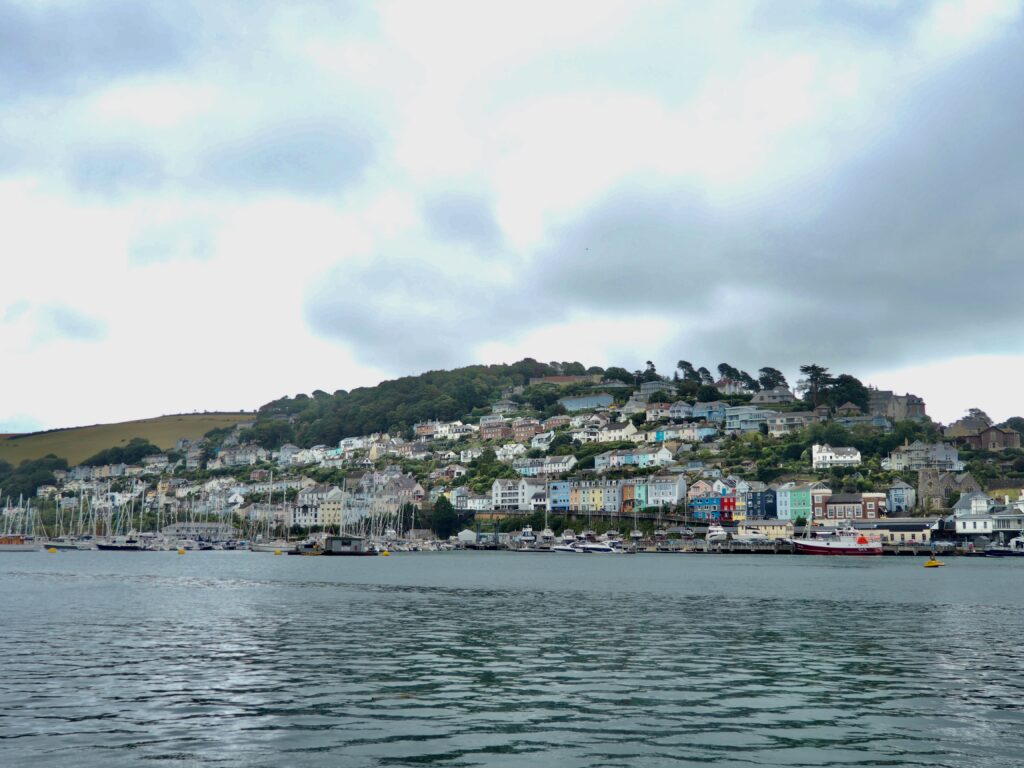
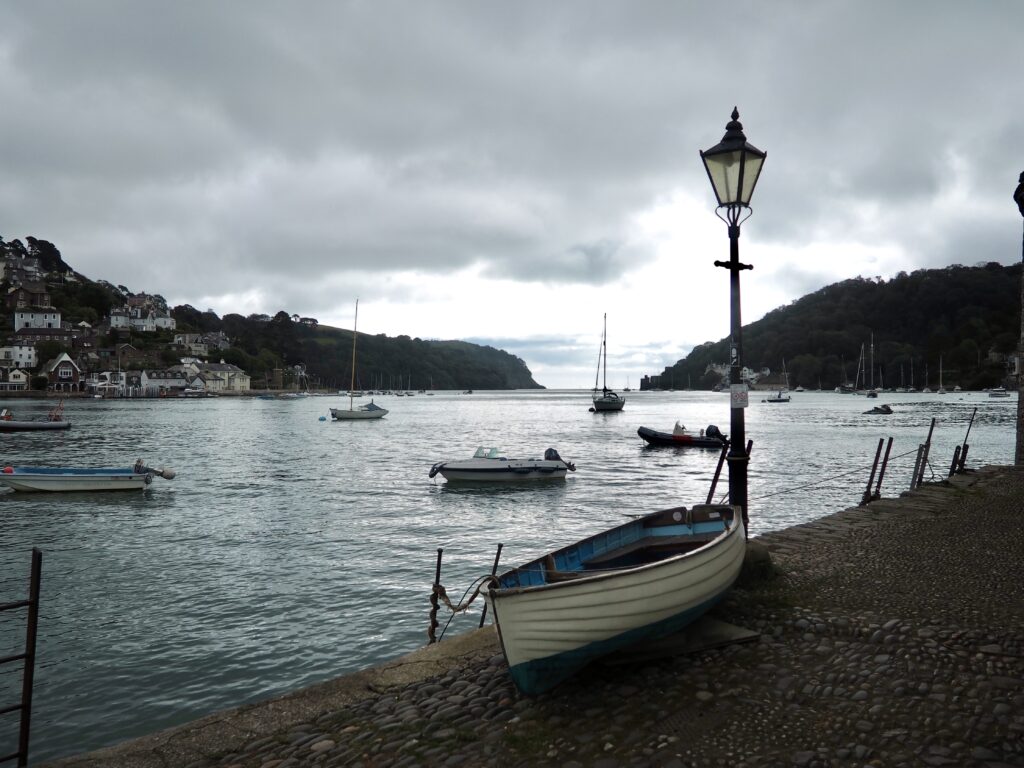

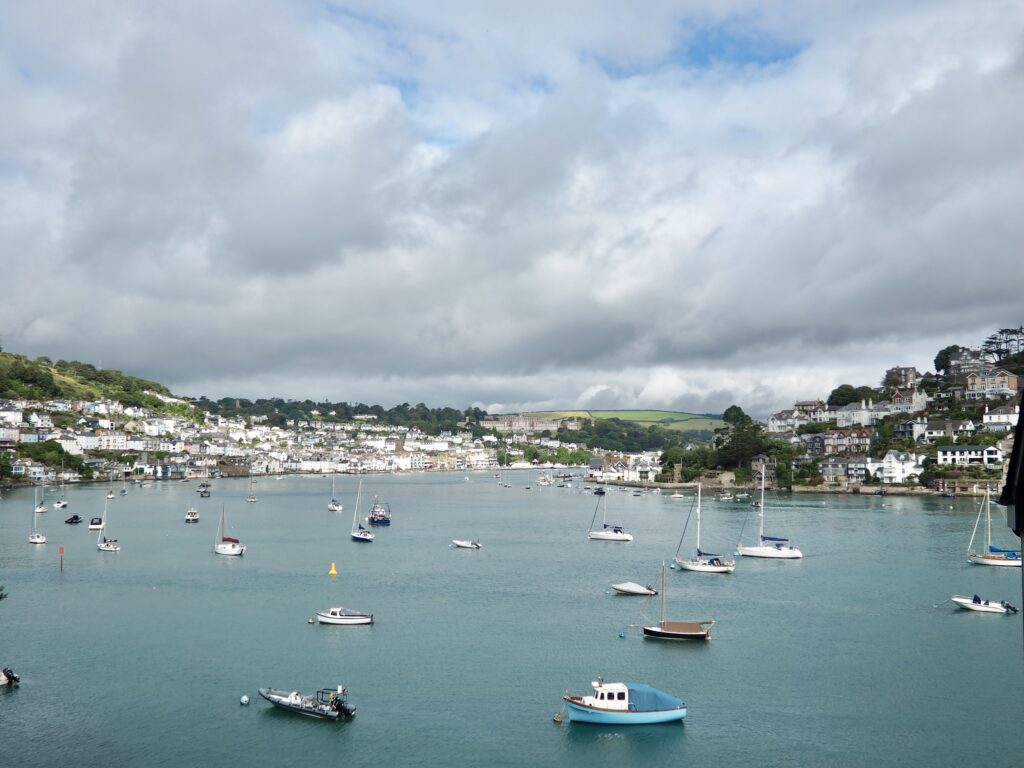
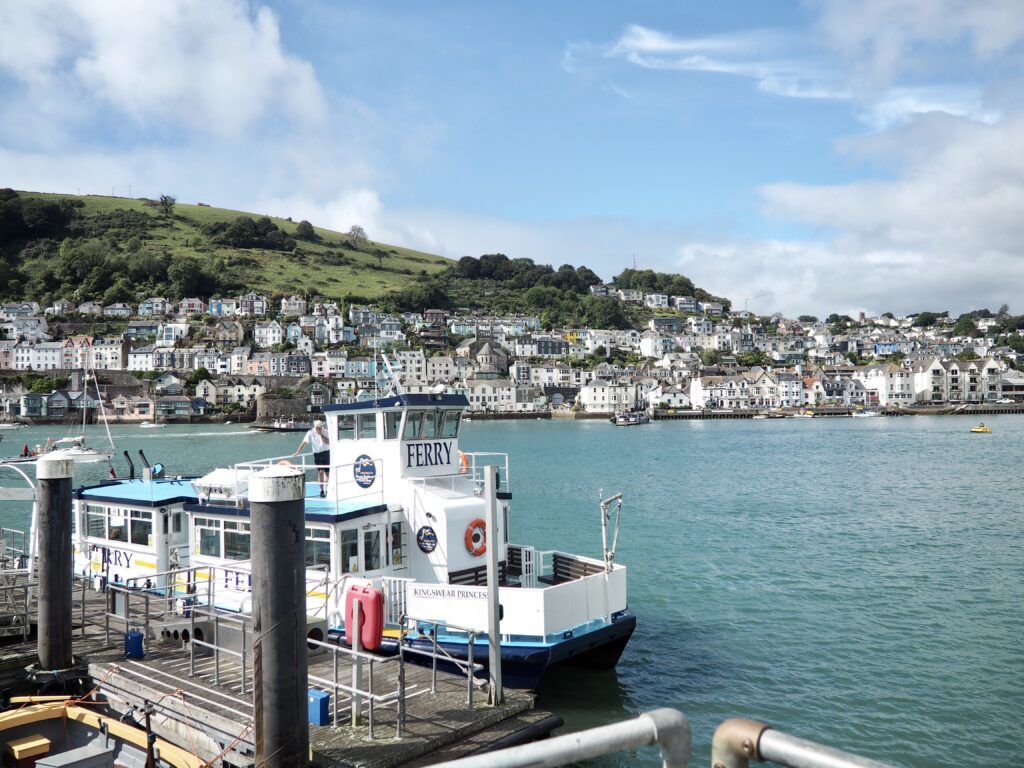
Steam Train to Paignton
In Kingswear, I headed to the train station right next to the ferry to board the train to Paignton. Not just a normal train, though; one of the UK’s many heritage steam trains still in operation. Now, as an environmental advocate, I take serious issue with the use of coal to power these and was very hesitant on whether or not I was actually going to take the train. But considering I was doing this whole trip on public transport, the alternative was a much longer journey of multiple buses and trains. So, I compromised on this one and took the train to Paignton. I did find it amusing that I’d come all the way from Scotland to the far southwest of England, and the engine was named ‘Braveheart’!
The journey to Paignton only took around 20 minutes or so, and the train had those old-fashioned compartments within the carriages. I got some wonderful coastal views as we zipped up the English Riviera. Paignton is the middle of the three towns on this coast – I was skipping Brixham, the southernmost. All three became popular destination of holidaymakers in the Victorian and Edwardian eras and that is still evident now. They have that British seaside vibe, with the colourful house and fish & chips galore. I wandered along to Goodrington Beach first, lined with beach huts that the same steam train soon came whistling past.
I then wandered back north over Roundham Head and on to Paignton Beach itself. The British seaside atmosphere is strong here, with mini golf and several arcades, as well as plenty of tourist shops and restaurants. In the centre of the beach, I found Paignton Pier, which is one big amusement arcade full of fairground rides. I walked a good way up the beach and could have continued all the way on to Torquay. However, I’d already done plenty of walking this whole week and it was pretty far, so I hopped on a bus instead.

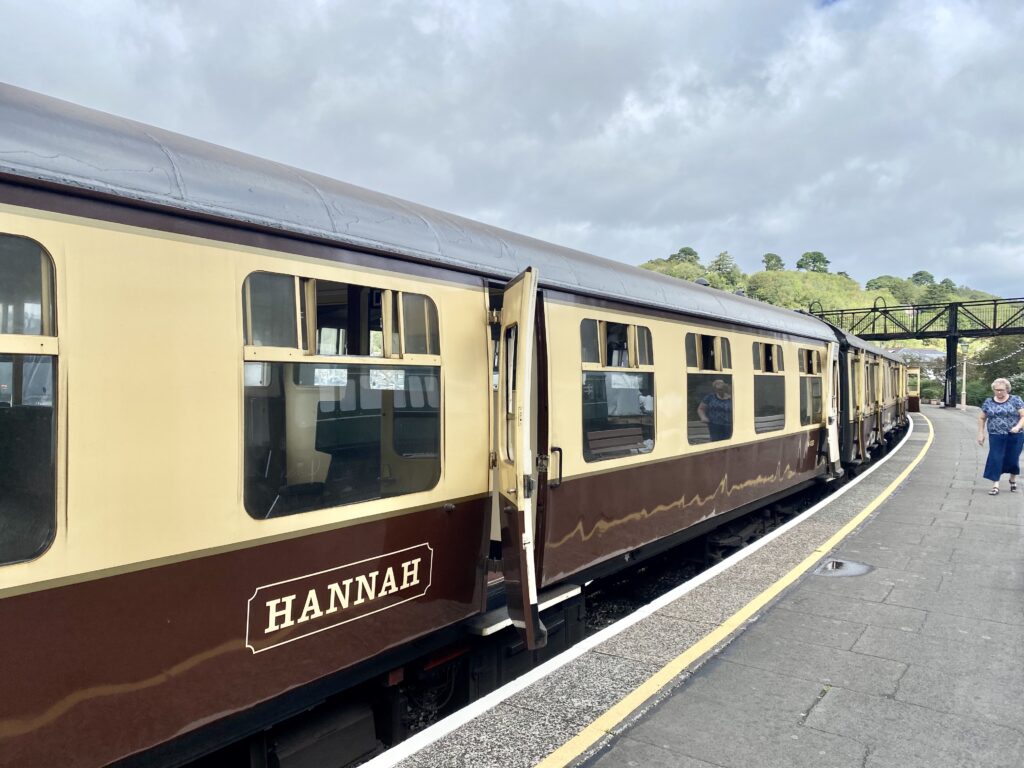
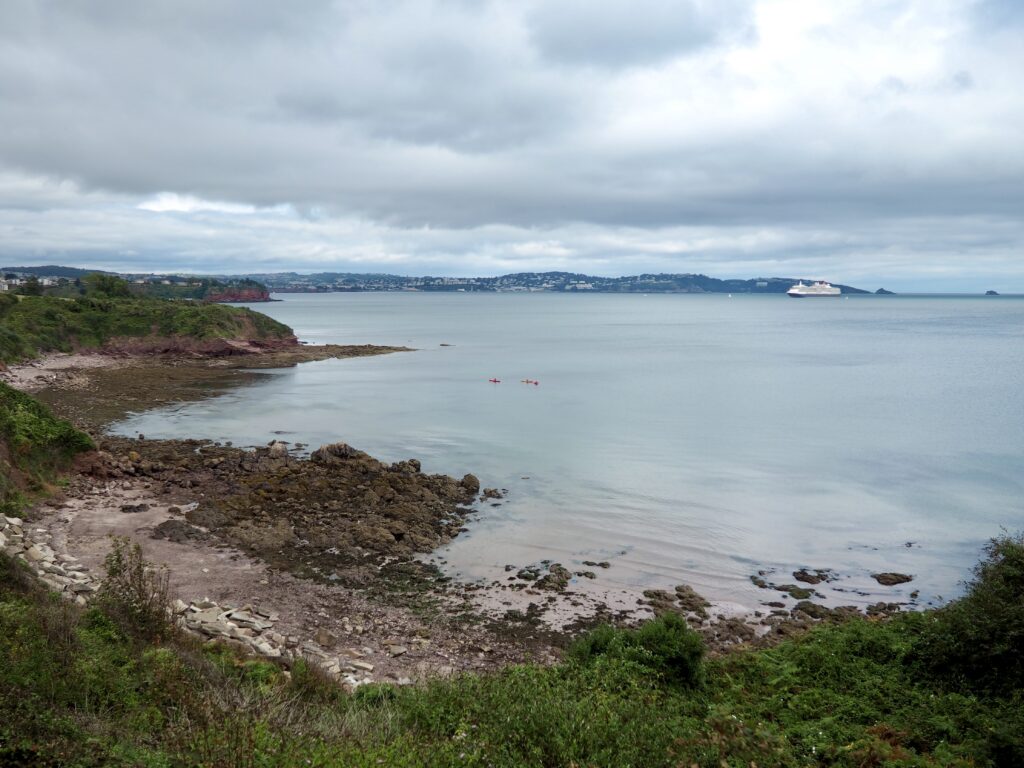
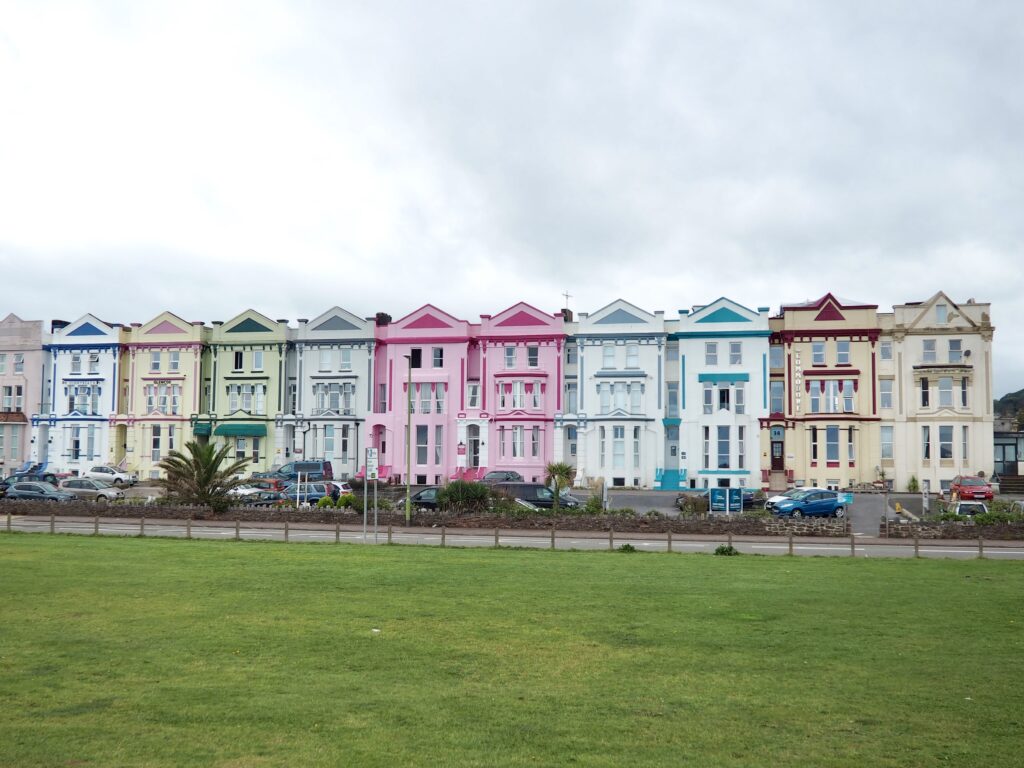
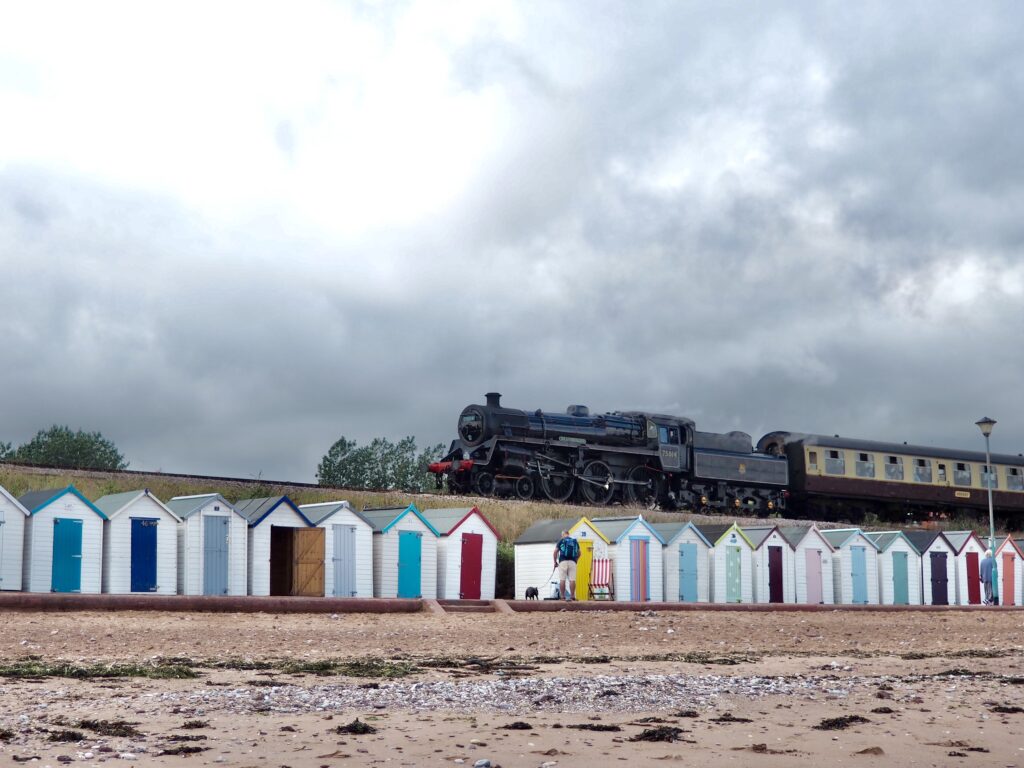
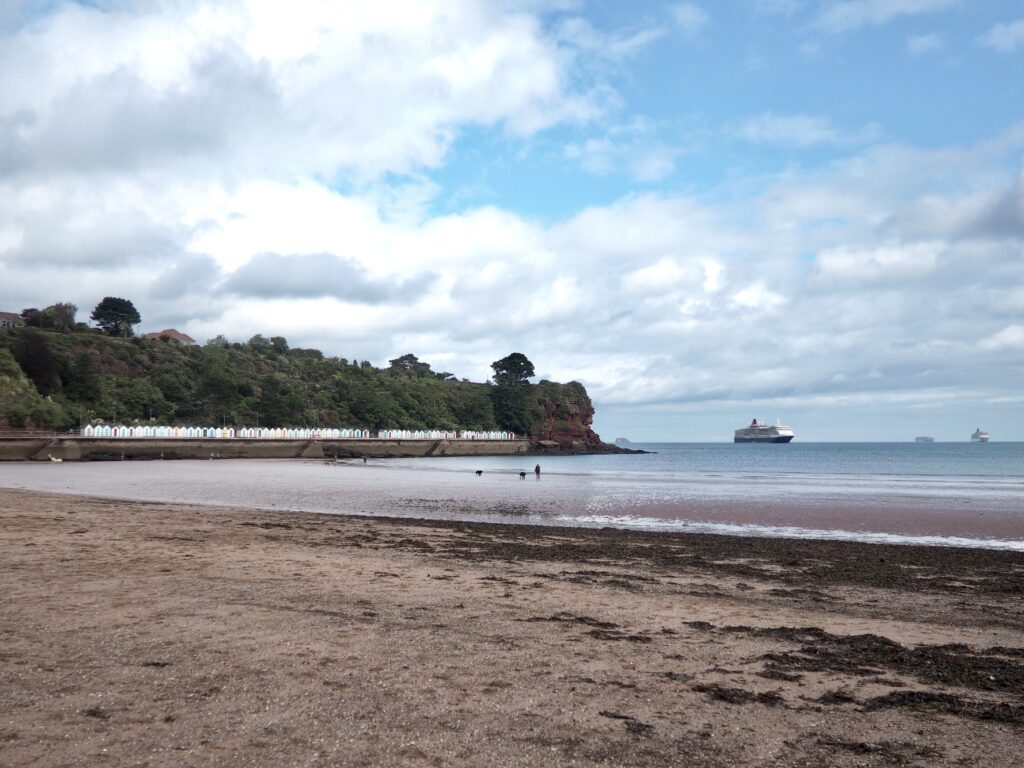
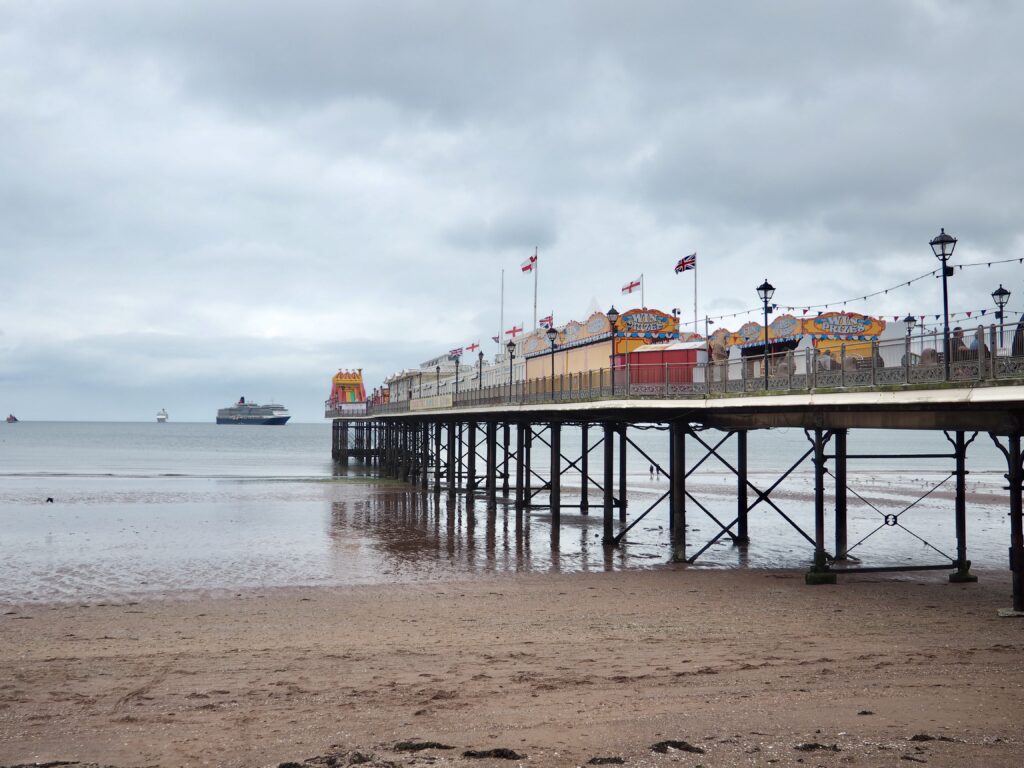
Torquay
The third and northernmost of the English Riviera towns is Torquay, famous as the home of crime writer Agatha Christie. I’ve never read any of her books, but I appreciate her significance to the literary canon. It was also getting late into the afternoon by this point, and I was getting tired. This meant I didn’t end up going into any of the town’s attractions, like the Torquay Museum, but instead just wandered a while. I hopped off the bus near the train station and walked along the beach towards the harbourfront.
Along the way, I passed more of those iconically British seaside features, including the ferris wheel and amusement arcade. I circled around the harbour with its many little fishing boats moored up. You can cross the harbour via a rather uniquely designed bridge, as pictured. This took me back on myself through Princess Gardens, with their carefully manicured lawns. I had also reached that awkward time when you’re reliant on public transport. Either I had to dash to the train station now, or commit to sticking around for a lot longer. After such a busy day and the journey back to Plymouth ahead, I opted for the former, ending my day on the English Riviera.
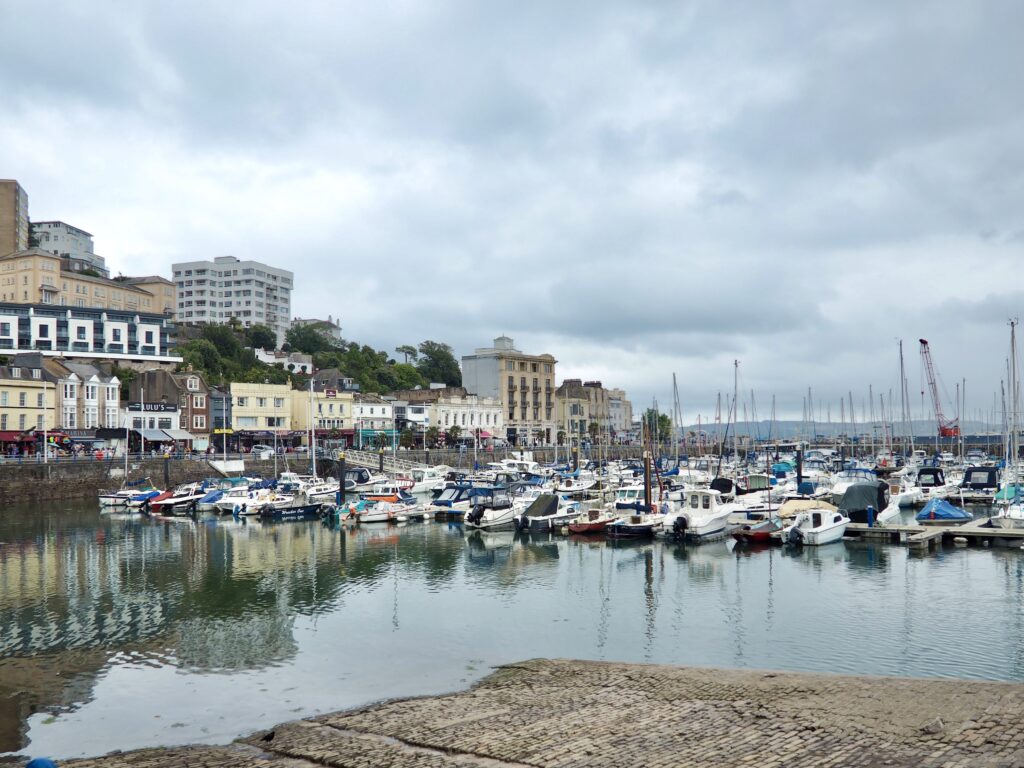
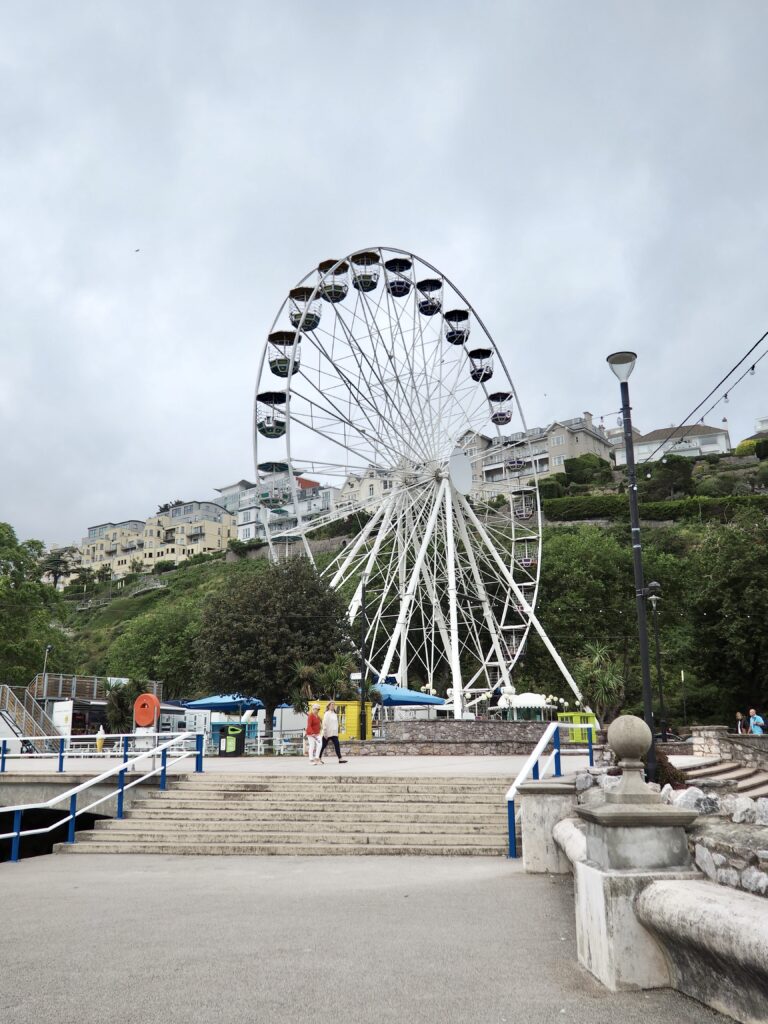
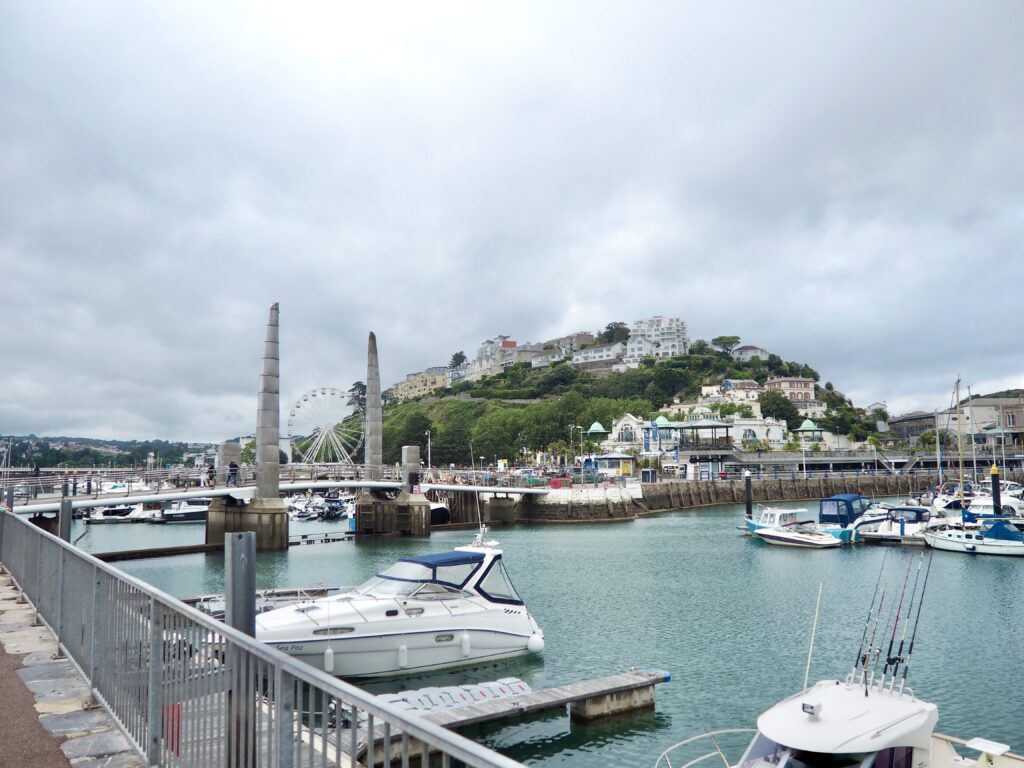
My time in Plymouth made for a packed itinerary, as you can see! Though we can blame the thunderstorm for part of that. It wasn’t a relaxing holiday as such, but I think I maximised my short time in the area by seeing as much as possible. The Eden Project was a definite highlight, and it was fun to see the total other end of the country!
You May Also Like
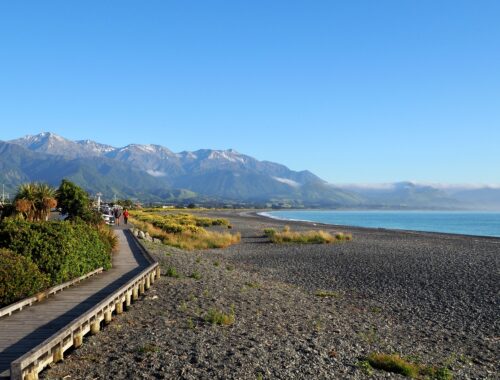
A Week in Kaikōura | New Zealand
17 April 2025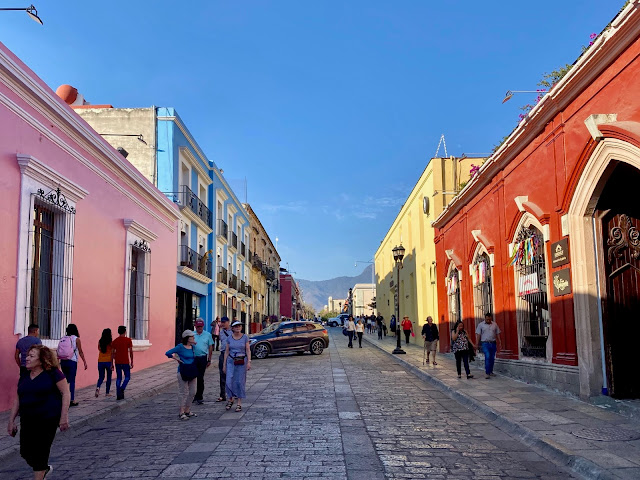
Oaxaca | Mexico
30 March 2020
